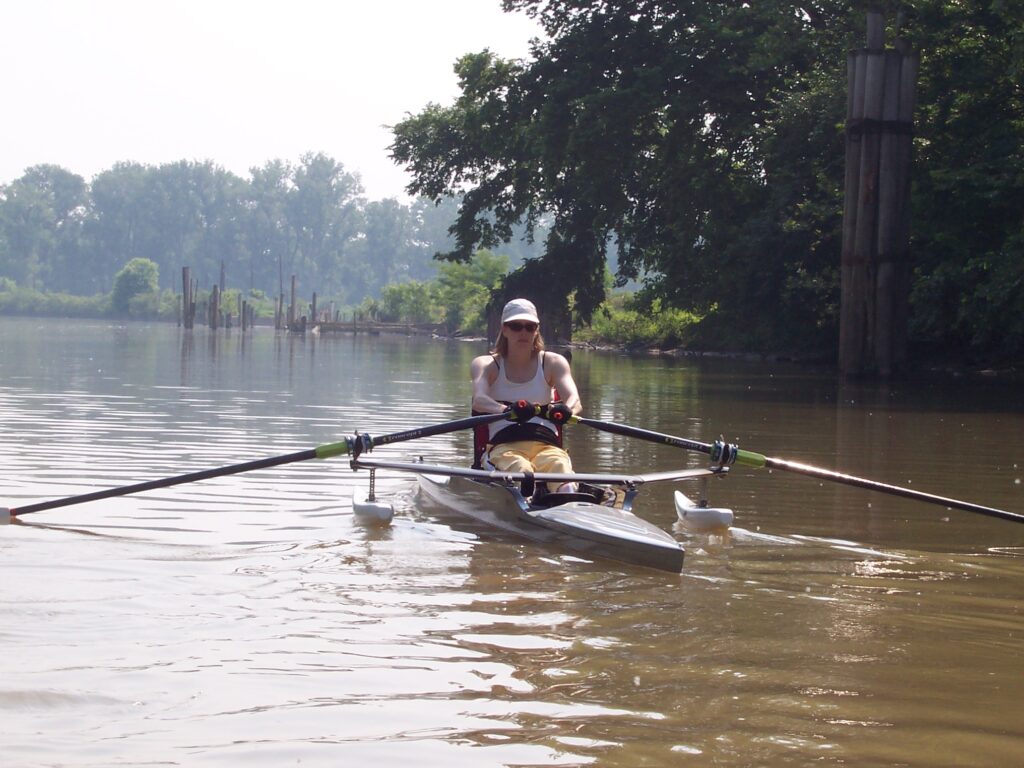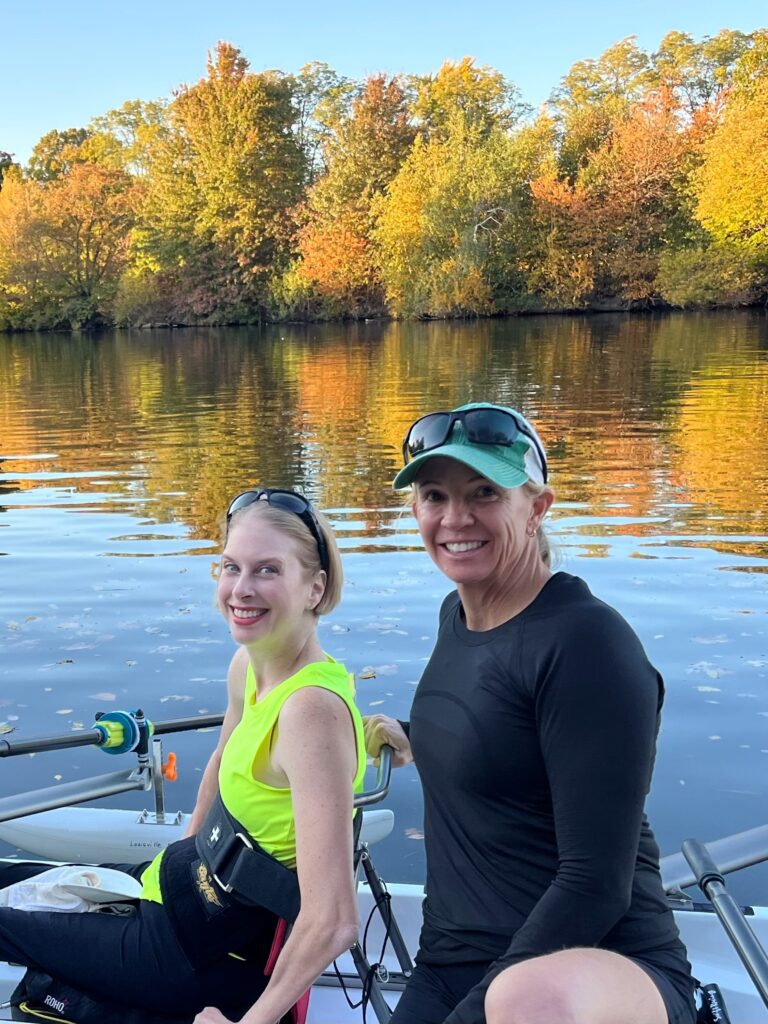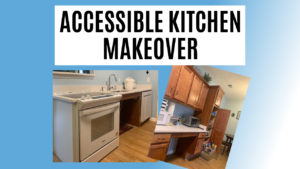“Why do I do this to myself?”
I sat in the hotel room practicing deep breathing exercises in an attempt to calm my nerves and my flip-flopping stomach. I’d finally have the opportunity to check off a bucket list item: race at the Head of the Charles, the largest rowing regatta in the world. Our race wasn’t until 4 p.m., which allowed plenty of time for my thoughts to wander to a thousand different “what if” scenarios.
What if I can’t do it?
What if my ActiveHands are too tight? Too loose?
What if we don’t pace ourselves well?
What if I’m too hot or too cold?
Breathe. Just breathe.
A friend asked me, “Why not just row the course instead of racing in the competition?”
Good question. There’s something about accomplishing a goal under the pressure of competition that is more fulfilling. I know I can row 3 miles. We row 4 miles every week. But in a competition, under pressure, on a new-to-us course on the famed Charles River? That’s what I wanted to accomplish.
You’ll often hear me talk about the need to be willing to take a risk and get out of my comfort zone because that’s where I grow. The Head of the Charles was a chance to get way out of my comfort zone and take a risk… the risk of failure.
Oops, I fell in love with rowing
I started rowing in 2005. Randy Mills, the director of Louisville Adaptive Rowing, pestered me until I gave in, saying, “Once. I’ll try it once.”
And I fell in love with rowing.
Not that it was easy. With a C6-7 (technically C5 ASIA A) spinal cord injury, learning the stroke for rowing took time and patience. In 2006, Jenny Pagni began volunteering with Louisville Adaptive Rowing. She became my rowing partner and we rowed well together. Jenny P learned to match my short, fast stroke.
Throughout my time with LAR, Bobby Hurley has adapted the riggers, seat, and oars to allow me to row better. The more I rowed, the stronger I became. And I started rowing in a single as well as a double.

Over the years, I competed at the Bayada Regatta in Philadelphia, and in Moline, IL, at the Quad Cities Regatta. Both of these regattas are 1000-meter sprint races. But I’m not a sprinter. With autonomic dysfunction due to my spinal cord injury, longer races fit my physical abilities better. Head races are three miles long. The longer distances give my body time to regulate my blood pressure and heart rate whereas sprints do not.
Para-rowing debuted at the Paralympics in 2008. At the London Paralympics in 2012, Louisville Adaptive Rowing’s Oksana Masters and her rowing partner, Rob Jones, clinched the first medal for the United States in para-rowing. Unfortunately, competing at the Paralympic level was never going to be an option for me due to the classification system. There’s no quad division and I compete against people with full hand, arm, and a lot of trunk function. Some can even walk. So, I had to set my sights elsewhere.
In 2014, Jenny P and I competed in our first head race at The Head of the Eagle in Indianapolis. But the Charles was still my ultimate goal. That elusive challenge was I wanted to work toward.
Just row
Finally, after years of dreaming, Jenny P and I were on the Charles headed to the start line for the Mixed Inclusion PR1 race. My biggest concern was the weather, but it was a perfect fall day: 69 degrees, sunny, and barely a breeze. We would be the last boat to start. As the most disabled rower, I knew we’d cross the finish line last, but I’d still set a goal of completing the race in less than 45 minutes.
Once we started, my job was easy: just row. Jenny P had the difficult responsibility of rowing and steering the boat through the six bridges on a winding Charles River.
And we rowed well. Not just well, but as good as we ever could have. Jenny P was amazing with steering; the boat hardly moved as she peered behind her into the sun to navigate the river and its bridges. When we (unknowingly) crossed the finish line, we still had enough left to keep rowing. I had to yell to the officials, “Are we finished?” Ha! One problem with rowing a new course is not knowing the sights even though you’ve studied the map for weeks.
The pressure. The nerves. The hassle of travel. The years of practice. All worth it.
To make a perfect race even better, we completed the race in 38 minutes and 45 seconds. And I am officially the first quad to compete at the Head of the Charles.
That, my friends, is worth every jittery thought, nervous breath, and what-if fear.
So, what is my next goal? I don’t have one. I’ll keep my eyes open for new opportunities and be willing to try something once. Just once. Because I might just fall in love with whatever that “just once” opportunity is.

And a big round of applause to…
Huge shout out to all the volunteers at Louisville Adaptive Rowing who show up every Saturday morning (and some weekdays), and the planning committees and volunteers at the Head of the Charles for making this an incredible experience. A race like this also needs to be funded. Thank you to Challenged Athletes Foundation, Friends for Michael, and individual donors.
This article may contain affiliate links.







